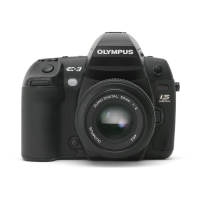122
EN
Shooting tips and maintenance
11
Shooting tips
Focusing on the subject
There are several ways to focus, depending on the subject.
AF target is not focused on the subject
•
Use focus lock to focus the AF target on the subject.
g
“Focus lock – If correct focus cannot be
obtained” (P. 58)
Other things instead of the subject are in focus on the respective AF targets
•
Set
[AF AREA]
to
M
and focus on the selected AF target.
g
“AF target selection” (P. 55)
The subject is moving quickly
•
Focus the camera on a point roughly the same distance away as the subject you want to shoot (by
pressing the shutter button halfway), and then recompose your picture and wait for the subject to
enter the frame.
Close up on the subject using macro lens
•
When using macro lens to close up on the subject, it is difficult to focus with AF when the
enlargement ratio of the subject is bigger. Set to manual focus (MF), rotate the focus ring and focus
manually.
g
“MF (manual focus)” (P. 54)
Taking pictures in low light conditions
•
The built-in flash can be set to function as an AF illuminator. The flash helps to focus in low-light
conditions in the AF mode when raised.
g
“Built-in flash shooting” (P. 78), “AF ILLUMINAT.” (P. 96)
Subjects that are difficult to focus on
It may be difficult to focus with auto focus in the following situations.
In any situation, focus on something with high contrast that is at the same distance as the
subject, determine the composition and shoot the picture.
Taking pictures without blurring
There are several factors that can cause the picture to blur.
The subject is too dark
•
Change the shutter speed to match the brightness of the subject. If the shutter speed is set low to
shoot a dark subject, blurring is likely to occur if the subject moves.
Increase the value of the ISO setting. When the shutter speed is slow, camera shake becomes easier
to see. Mount the camera on a tripod. Using the remote control (optional) to close the shutter is also
effective for reducing blurring.
The camera or your hand moves when pressing the shutter button
•
Press the shutter button gently or hold the camera securely with both hands.
•
Use the image stabilizer function.
g
“Image stabilizer” (P. 63)
AF confirmation mark is
blinking.
These subjects are not
focused.
Subject with low contrast Excessively bright light
in center of frame
Subject with
repeated patterns
AF confirmation mark
lights up but the subject is
not focused.
Subjects at different
distances
Fast-moving subject Subject not inside
AF area

